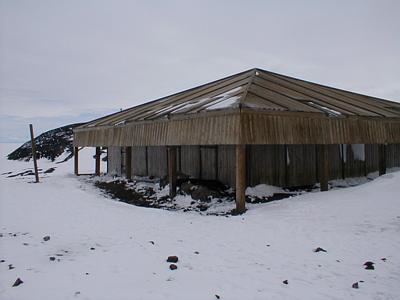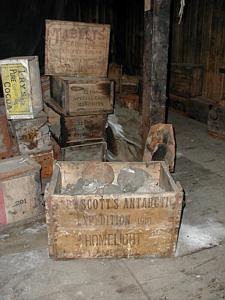11 November, 2000
End of the Earth
Flying to New Zealand from the United States brought with it several changes. The time moved forward almost a full day. The season changed from fall to spring. The moon looked "upside down" compared to the perspective I'm used to.
Coming to Antarctica has provided some new changes. The most dramatic is the fact that the sun is always up. When I left the lab yesterday it was midnight but I had to put on my sunglasses! Because of the Earth's tilt, the polar regions get 24 hours of daylight in the summer. It appears to circle around the horizon. It is a bit higher at noon and so it is not as cold. But it never gets high enough to really feel warm. The temperature at noon was -1 degree Celsius (30 degrees Fahrenheit). At midnight it was -15 degrees Celsius (5 degrees Fahrenheit). In winter the opposite situation occurs and the sun never rises.
I took a compass with me when I climbed Observation Hill yesterday. I also had a map so I could determine which way was south. But the compass pointed in almost the opposite direction. That is because there are two poles. The geographic South Pole is the location of the Earth's axis, around which it spins. That point is high on the polar plateau about 800 miles from McMurdo Station. Compasses point toward the South Magnetic Pole. This is a feature of the Earth's magnetic field. It is currently about 900 miles northwest of McMurdo off the edge of the continent. A similar situation exists in the north where there are also two poles. The magnetic poles move a few miles each year.

I made a visit to Scott's Discovery hut, built by the explorer in 1902. Shackleton and Scott built other huts further north on Ross Island for their later attempts at the Pole but they also utilized the Discovery hut during those expeditions.

Due to the cold, dry climate the building and its contents are amazingly well preserved. Inside are a variety of leftover provisions, equipment, and clothing. There is seal blubber, sheep carcasses, and feed for Scott's Manchurian ponies. The inside of the hut looks like something from a museum but it's the real thing preserved for almost a century.
Contact the TEA in the field at
.
If you cannot connect through your browser, copy the
TEA's e-mail address in the "To:" line of
your favorite e-mail package.
|
